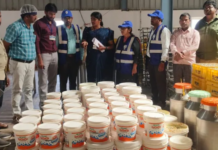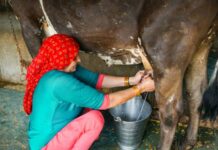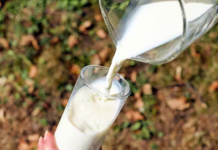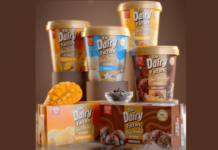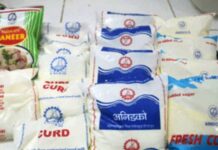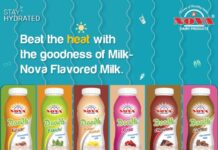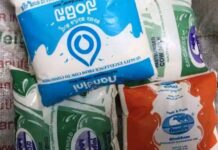New Delhi, August 23, 2022: After entering the dairy segment with curd and paneer, iD Fresh Food is strengthening its presence in the category with the introduction of ghee. This year the company raked in Rs 100 crores from its dairy portfolio and with the launch of ghee this month, it expects to take it to more than Rs 200 crores in three to four years.
Rahul Gandhi, chief marketing officer, iD, says dairy is an attractive segment and iD is a serious dairy player in the geographies it operates.
“We have had success with paneer and curd. iD paneer on any ecommerce platform will have a market share in the mid to high 20s. Ghee is a natural extension in the dairy portfolio because it’s one of the large categories. In terms of category size, ghee is larger than curd and paneer put together,” he says.
According to industry estimates, the ghee market is estimated to be worth Rs 10,000 crore. It is a crowded market, dominated by traditional players like Amul, Mother Dairy and Paras Milk Foods. Gandhi says there is still space in the market for growth.
“The category is still being created and is still heavily under penetrated. The category creation is probably going to take the next 15-20 years and at that time we’ll think that iD was one of the early players,” he says.
Naresh Gupta, cofounder, Bang in the Middle, feels it is a big stretch for the brand. He says people have long established choices in this competitive segment. “To move from non dairy to dairy, from cooking aid to cooking fat, it doesn’t make sense. For consumers moving to a new brand is tough. I suspect iD foods is looking at the opportunity from a market size perspective. It’s similar to brands entering the honey market – even the biggest brands have struggled. I am not hopeful that iD will have a quick win,” he says.
However Gandhi believes that people are constantly experimenting with food. “They are always looking for something that offers them better value. Everything which offers them value seems to be successful. I don’t see why ghee should be any different,” he says.
Samit Sinha, founder and managing partner, Alchemist Brand Consulting, feels the brand shouldn’t have to restrict itself to dosa and idli batter for the rest of its life. “It can expand and diversify into other categories, provided the brand’s owners have a clear idea of the brand’s boundaries. If they see their brand as natural, organic, homemade, instant foods, then venturing into large and growing categories is not an imprudent move,” he says.
While Sinha admits that it will find it hard to crack the new categories, he believes their reputation as a dosa and idli batter brand is more likely to be an advantage than a liability. “They have a good chance of finding early favour amongst their current loyal customers, which could prove to be a strong platform to leapfrog from,” he adds.
Product Differentiator
When iD enters these markets it looks for a consumer need that is yet unserved. In these categories its strategy is to bring the manufacturing process as close as possible to kitchen practices.
One of the consumer needs that iD attempts to serve is to make food the better way. For example, in paneer it doesn’t add citric acid and instead uses lemon, just as it is made at home. “It may become slightly less commercially viable, but enough consumers are affluent enough to be able to afford that premium for their better health,” Gandhi says.
Similarly, with the ghee it will be made from fresh milk cream. “Some brands make ghee from frozen butter, which may be stored for upto a year. But our differentiation is our manufacturing innovation,” he says.
Pricing
The iD ghee is currently available in the Mumbai and Pune markets in one kg pouch (Rs 689), 500gm pouch (Rs 350) and 500gm pet jar (Rs 375). This is slightly higher priced compared to its rivals in the market. A 1-litre pack of Gowardhan, Amul or Nandini ghee costs between Rs 450-Rs 500.
“We are targeting consumers who are aware of the need to consume conscious foods and are willing to pay that slight premium for a better product,” he says.
Packaging Innovations
According to the reports published in afaqs.com in every category that iD enters, it attempts to bring innovations and convenience to the consumers – whether it is the ‘squeeze and fry’ vada maker or the naturally packed grated coconut in a coconut. With the ghee, it has introduced a spout in the 500 gm pouch, that enables one to conveniently pour out the ghee.
“People tend to transfer the ghee from the pouch or metallic tin into a stainless steel container. We found that it can be pretty inconvenient. We are the first player to have a spout in the packaging. Ghee is used in very small portions. So it is very amenable to the pouch format where you unscrew it, take as much as you need and then keep the rest,” he adds.
In the dairy segment, iD has another innovation in the pipeline – a butter stick.
iD’s expansion in new categories
Launched in 2005, with idli-dosa batter, it has been constantly expanding into newer categories. It now sells paneer, curd, chapati, parotta, bread, filter coffee decoction, tender coconut and grated coconut. Currently 70% of its revenue comes from batters and Indian breads and 30% from the rest.
“Both are equally big for us. Batter is big in India and parotta in the UAE. After these two, our paneer has done really well,” he says.
While foraying into newer segments the company looks at the attractiveness of the category in terms of size and profitability, how likely it is to succeed in it and whether it will be able to provide a differentiator. It also needs to align with iD’s brand ethos of offering fresh, healthy and natural products.
Apart from experimenting in the batter and Indian breads segment, where it is attempting to be a category leader, it is also looking to innovate in food categories that have a long shelf-life, like cookies, spices, honey, etc.
“We are trying to figure out if we can carve out a fresh avatar of it. As a fresh foods company we have to be careful about our experiments. If it fails the product will come back in seven days. You can take a bigger risk if you are selling long shelf-life products that have preservatives as there is more time to make it work. So we do limited experiments, but in everything we try to offer distinct products,” Gandhi says.
In the long-term iD wants to establish itself at the intersection of convenience and health. “It’s a very ripe space and iD is occupying it very well. Like we did with batters, we are looking at other food categories that the homemaker finds it difficult to make. We don’t want to give anything ready to eat because we want the homemaker to have control over the last ingredients,” he says.
Sinha says when a brand that is strongly associated with a particular product or product category tries to transgress boundaries, more often than not, it fails. However, if the brand expands or diversifies into categories where the core identity has been created around a consumer segment, a broader category, a set of functional and emotional benefits or a core value that easily and naturally lends itself to a new category, it is usually well accepted.
“A brand’s value resides in its ability to own a distinct association in people’s minds. That happens over time through a clear understanding on the part of the brand’s owner of what it essentially is and then a consistent manifestation of that core identity across all its various touch-points. The association need not be restricted to establishing it around a particular product or category,” he says.




